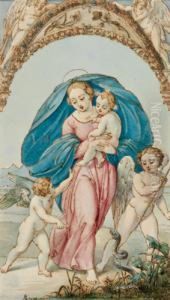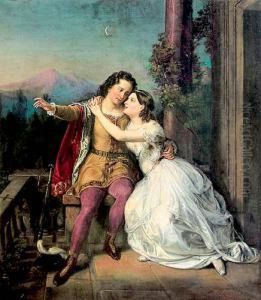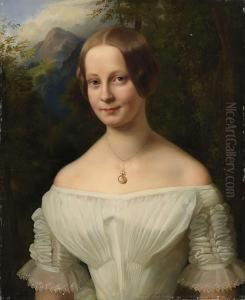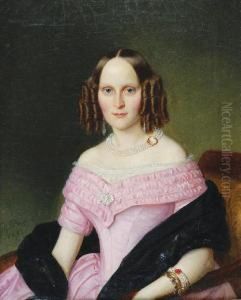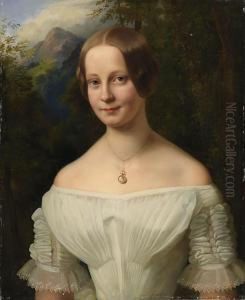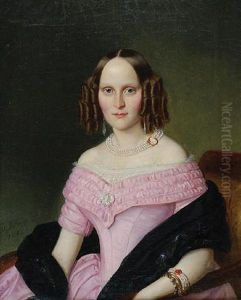Julius I Schoppe Paintings
Julius I Schoppe, born in Berlin in 1795, was a German artist and illustrator whose work spanned various mediums, including painting, drawing, and engraving. Schoppe emerged as a notable figure in the early 19th century, a period rich in artistic experimentation and revolutionary ideas in Europe. He was part of the Romantic movement, which emphasized emotion and individualism as well as glorification of the past and nature.
Schoppe's education in the arts began under the guidance of established artists of his time. He honed his skills in Berlin, a city that was becoming a vibrant center for artistic innovation and intellectual discourse. Schoppe's early career was marked by his engagement with themes of mythology, history, and literature, which were prevalent among Romantic artists. His illustrations often depicted scenes from German folklore and classical antiquity, imbued with a sense of drama and emotional intensity characteristic of the Romantic spirit.
Throughout his life, Schoppe contributed to the visual arts in Germany through his participation in exhibitions and his work as an illustrator for books and periodicals. His illustrations helped popularize the works of German poets and writers by providing visual interpretations that complemented and enhanced the written word. Schoppe's artistry was not confined to illustration alone; he was also involved in designing sets for theatrical productions, further showcasing his versatility as an artist.
Schoppe's legacy is tied to his ability to capture the imagination of his audience, drawing them into the fantastical worlds he created. His work reflects the broader trends of Romanticism, with its emphasis on emotion, nature, and the exploration of historical and mythological themes. Julius I Schoppe passed away in 1868, leaving behind a body of work that continues to be appreciated for its contribution to the Romantic movement in art. His influence persisted through the 19th century and beyond, as future generations of artists and illustrators drew inspiration from his imaginative and evocative creations.
